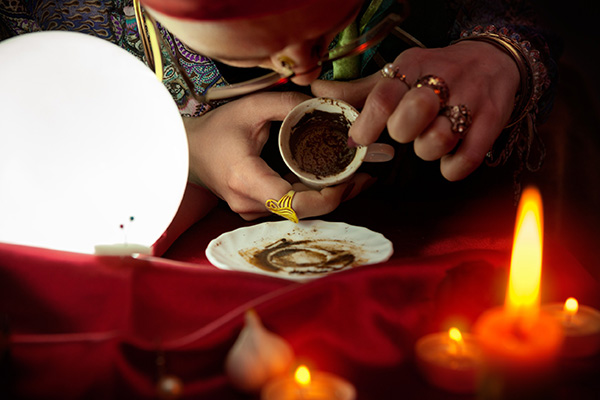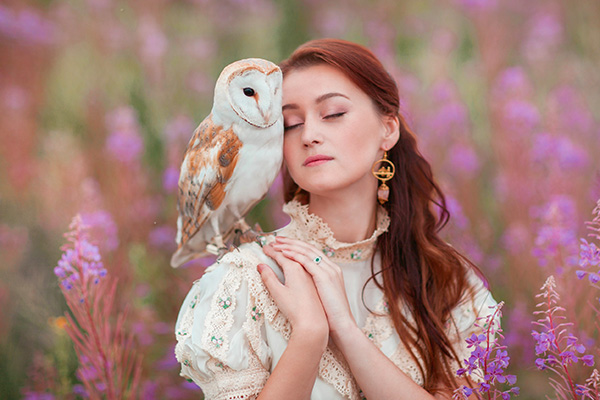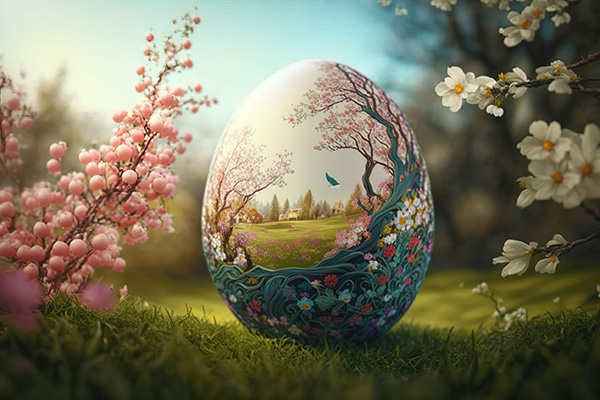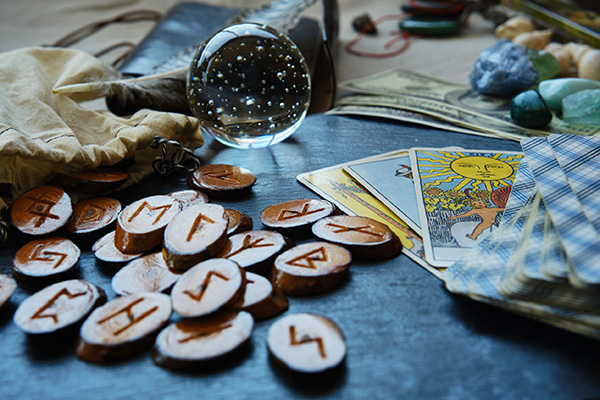ancient wisdom
The Vibrational Alchemy Of Crystal-Infused Water
 I love using crystal water as part of my spiritual practice. Crystal-infused water is an alchemical elixir for harmonizing the body, mind, and spirit.
I love using crystal water as part of my spiritual practice. Crystal-infused water is an alchemical elixir for harmonizing the body, mind, and spirit.
Using the vibrational properties of crystals, this practice involves infusing water with the subtle energies emitted by carefully selected crystals and gemstones. Drinking crystal water is a powerful healing tool and wonderful for maintaining holistic balance and inner harmony.
I like to drink crystal water only once a week. I do not want to interfere with the body’s energetics every day. This is also a great way to get more water into your body and hydrate.
The use of crystals for healing and spiritual purposes dates back thousands of years, originating in the ancient civilizations, such as Egypt, Greece and China. These cultures believed in the energetic properties of crystals and used them for various purposes, including healing, protection, and spiritual connection.
While there is limited historical documentation that specifically mentions crystal-infused water in ancient traditions, it is evident that the ancients held a deep reverence for both crystals and water in their spiritual, healing, and ceremonial practices. Over time, as the awareness of the metaphysical properties of crystals evolved in modern times, the practice of immersing crystals in water for drinking emerged.
The Old Souls Of The New Children
 Since the 1960s, the “New Children” have been arriving on the Earth plane in increasing numbers, bringing with them wisdom, insights, perspectives and innovations that are sorely needed in our rapidly evolving, and currently very troubled world.
Since the 1960s, the “New Children” have been arriving on the Earth plane in increasing numbers, bringing with them wisdom, insights, perspectives and innovations that are sorely needed in our rapidly evolving, and currently very troubled world.
The New Children are old souls reincarnated to return to the earthly realm on a special mission — to guide, heal, teach and enlighten; to awaken humanity to a higher level of consciousness.
As more and more of these ancient souls grace our planet with their presence, it is becoming increasingly apparent that they possess a profound understanding of the interconnectedness of all life and the inherent unity that binds us together.
Through their innate wisdom and pure-heartedness, the New Children are converging to transform the collective consciousness of humanity. They are introducing us to a future society where prejudice, discrimination and injustice are relics of the past, replaced by a deep reverence for the inherent dignity and worth of every soul.
The wisdom that this new generation of humans carry is not bound by the limitations of social constructs and dogmatic religion. They challenge us to look beyond the superficial labels of body, gender, race, creed, and nationality, reminding us that these are merely temporary identities that obscure the true essence of who we are. They have a deep understanding that we are all equal and deserving of love, regardless of outward differences.
The Mystical Tradition Of Reading Coffee Grounds
 Traditional Turkish coffee is unique in its preparation. Prepared without the addition of milk, cream, and other additives, it focuses on the pure, robust flavors of the coffee.
Traditional Turkish coffee is unique in its preparation. Prepared without the addition of milk, cream, and other additives, it focuses on the pure, robust flavors of the coffee.
The art of brewing Turkish coffee is a meticulous process using a special coffee pot called a cezve or ibrik, which produces coffee with a strong flavor and thick, frothy texture. The grounds remain in the cup when it is served, contributing to the distinctive bitter taste that is a hallmark of this revered beverage.
In addition to its strong taste and aroma, Turkish coffee has a mystical appeal and a long history as a divination tool. The use of Turkish coffee grounds for divination, known as tasseography or kafemandeia, is a traditional practice in many cultures, including Turkish, Arabic and Greek.
In other cultures, tasseography is mostly practiced with tea leaves or wine sediments, but in Istanbul, coffee grounds became the preferred medium for this mystical art.
Steeped in history, the practice can be traced back to the Ottoman Empire, when coffee divination became popular in the 16th century in the harem of Sultan Suleiman the Magnificent, located in the Topkapi Palace in Istanbul, Turkey. This divination ritual was originally a way for the women of the harem to share news, gossip, and insights. At the time, women were banned from public coffeehouses, so fortunetellers, commonly known as “falci,” were allowed into the harem to read for the sultan’s wives. The term “fal” means “omen” or “fortune.”
Connecting With Your Spirit Animal
 The concept of animals serving as spiritual guides and symbols for personal growth has deep roots in human culture, stretching back to ancient indigenous societies and persisting through to modern spiritual practices.
The concept of animals serving as spiritual guides and symbols for personal growth has deep roots in human culture, stretching back to ancient indigenous societies and persisting through to modern spiritual practices.
This enduring belief stems from the profound connection humans have observed and felt with the animal kingdom throughout history.
In many indigenous cultures around the world, animals traditionally hold a sacred significance and are believed to possess spiritual wisdom and powers. Many cultures also have animal symbolism in their myths, folklore, rituals, and everyday life.
For example, Native American tribes traditionally attribute personal qualities and character traits, such as strength, courage, wisdom, and cunning, to various animals, viewing them as embodiments of these virtues.
Acoording to these indigenous teachings our animal totems or spirit animals offer us guidance, protection, and insight on our spiritual journey.
We can connect with our spirit animal through meditation, dream interpretation, or rituals. By aligning with the characteristics of our chosen animal, we can gain strength, wisdom, and a deeper understanding of ourselves and our path in life.
Embrace Life’s Turbulence With The Right Attitude
 With the many ups and downs we face in life, it is sometimes possible to feel euphoric one moment and utterly devastated the next. Yes, life is challenging at times. But Spirit says that our attitude makes all the difference.
With the many ups and downs we face in life, it is sometimes possible to feel euphoric one moment and utterly devastated the next. Yes, life is challenging at times. But Spirit says that our attitude makes all the difference.
Life’s emotional roller coaster is an inevitable part of the human experience. However, by choosing the right attitude, we can transform this journey into an opportunity for growth, learning, and profound spiritual awakening. If we choose the right attitude, it can soften the emotional roller coaster ride of life.
Our soul purpose requires that there be times of great happiness and deep sorrow, for it is through successes and hardships that we learn how to evolve spiritually.
But when we choose to trust the process and embrace our journey with the right attitude, it becomes much easier to deal with the stressful issues and demands of everyday life.
Our attitude toward life’s ups and downs plays a pivotal role in shaping our experiences. By adopting the right attitude, we can greatly reduce the emotional turbulence that accompanies life’s challenges. It’s like putting a cushion in the seat of a roller coaster – it doesn’t eliminate the dips and drops, but it does make the ride more bearable!
Revitalize Your Life With A Spiritual Spring Clean
 The spring season is upon us and with it comes a fresh energy of renewal and rebirth.
The spring season is upon us and with it comes a fresh energy of renewal and rebirth.
Very often at this time of year people do a “spring cleaning” of their homes and workspaces, and for good reason. On a spiritual level, we have been moved by the powerful influence of this vibrant seasonal energy since the beginning of time.
As the light of the sun returns and the air begins to warm, we feel on a deep level the cycle of rebirth and the return of fertility to the earth that sustains us, just as our ancestors did through the ages. It inspires us to make room in our lives for this invigorating energy of renewal.
The ancients held the spring in high regard, attributing significant spiritual and symbolic meanings to the season. Although beliefs varied across different cultures, they mostly centered around themes of renewal, fertility, rebirth, and celebration.
In Ancient Egypt, for example, spring was closely associated with the annual flooding of the Nile, which brought fertile silt to the fields. The Egyptians celebrated the festival of Sham el-Nessim, marking the beginning of spring, which was believed to bring rejuvenation and health.
The Spiritual Practice Of Rune Reading
 I have recently reintroduced rune reading into my daily spiritual routine. I had briefly dabbled in it a few years ago when I was exploring various methods of divination.
I have recently reintroduced rune reading into my daily spiritual routine. I had briefly dabbled in it a few years ago when I was exploring various methods of divination.
But this time, as my quest has become more personal due to recent events in my life, and I found myself remembering much of what I had learned years ago, the decision to use the runes again has proven to be a deeply enriching experience.
I have since discovered that the runes are a fantastic spiritual tool for deeper introspection, inner guidance, and connection to the universal spiritual principles that underlie these small tablets of ancient wisdom.
The term “rune” itself means “secret” or “mystery” in Old Germanic languages, reflecting their traditional use for various purposes, including writing, divination, and magical practices. Each runic tablet or stone contains a character from the ancient alphabets of early Germanic and Scandinavian cultures, including the Elder Futhark, which is the oldest form of the runic alphabet.
The Elder Futhark dates from the 2nd to 8th centuries and consists of 24 runes, each with its own unique meaning and symbolism. I use the Elder Futhark, which is the most commonly used rune set in divination practices, just as the Rider-Waite Tarot deck is the most commonly used in cartomancy.